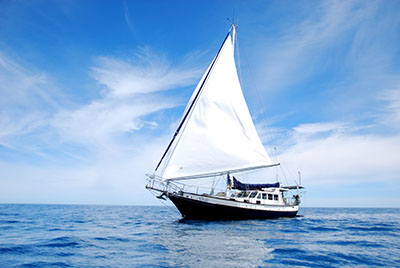South Africa, a fascinating region of the world. An ancient, harsh land eroded by time and its elements, its magnificent animals leaving you in awe of their power. Animals aside, many were the times we commented upon how similar the country itself reminded us of home, but that wasn’t so surprising when one considered the continents were once connected.
It was on the eastern seaboard, just out from Mossel Bay that a few thousand survivors of our early ancestors resided. It was the food sources of land and sea available here that saw survival assured, as they eked out an existence during the last glacial period 70,000 years ago ice age – an event that saw their fellow relations in other regions disappear from the face of the earth. These few ensured our kind was saved from mass extinction and saw the land eventually repopulated.
So often we saw how far conditions are yet to change: coming from such a forward thinking nation, it was difficult to conceive.
A land filled with an abundance of riches, yet one espied such abject poverty amongst the immense wealth of a select few. In the North this appeared more prominent, whilst the further south we travelled the more conditions seemingly improved.
People, so many people. This was a land in which the people differentiate themselves by colour, for example: Afrikaans, the Whites; Negroes, the Blacks; Indians, the Coloureds.
In our journeys within the Richards Bay area and its surrounds, we perceived that the majority of the native South Africans, in this case the Zulu’s, lived in townships many in one roomed round huts, reminiscent in style to their traditional structures. Yards on the whole were barren patches of brown earth and if one was fortunate, contained maybe a cow, or a donkey, or a goat, or a handful of chickens. Cows here were lean: with skin hugging tight as lycra against their skeletons, these animals appeared emaciated as they were herded along the roadside verges where they grazed upon the few succulent shoots to be found – pure ambrosia to them!
With wages low, the average between one hundred and fifty to two hundred rand per day (between sixteen to twenty – two dollars Australian dollars per day), these people often walked miles in order to catch a bus to work: Hebron whom we eployed to assist in readying Gratis for her Caribbean leg, would arise at 4am for his hike to the bus stop. Upon exiting the conveyance, he had yet a further 45 minute hike before an 8am arrival at his place of work: a process repeated when homeward bound.
Since the conclusion of apartheid and the defeat of the leader following Mandela, development for the greater good had slowed to a bare trickle and corruption was rife throughout the government sectors. Sadly, prior to the mass exodus of whites, untrained Africans suddenly found themselves in positions of which they had no – or – little knowledge. Networks and Infrastructure were almost non – existent. Upkeep and maintenance required, for example the upkeep of roads, were practically unheard of.
Whilst listening to the radio one afternoon, we heard of protests taking place as a result of broken promises regarding the installation of electricity and running water in homes: the people had been waiting for over ten years.
In many ways, conditions were as dangerous as two hundred years in the past. The townships of Johannesburg and Durban, for example, found the visitor unable to wander with ease during the daylight hours, whilst night time meandering was just not done. Throughout the country (Cape Town excepted) we visited, homes of the Afrikaans were barred: security doors, high walled fences a – topped with barbed wire or electric wires – mini compounds, in effect. Visiting the physio, large metal gates prevented the client from entering. An external doorbell enabled the visitor to ring for admittance. People were murdered for as little as a pair of Nikes. Some of our friends ventured further north and experienced some of the worst. Awaking with headaches one morning, they discovered the bars upon their windows pulled out, their belongings gone, and several cockroaches ‘dead’ upon the kitchen floor. Later that morning the ‘roaches returned to life and scuttled away. It was believed they had been gassed. Only in Cape Town did one sight white skinned people running or wandering the streets alone. At no stage during our time there, could I wander freely. We tourists likened life here to that of living in a gaol.
A Dutch born lady related to us the story of how she and her husband were ostracised after thanking a native African for his assistance by inviting him aboard their yacht for an evening meal.
In various places there were separate toilets for the workers, who just happened to be native Africans and many Afrikaans treated them quite poorly. One occasion firmly entrenched in our minds occurred whilst purchasing some products in a small shop. The white owner initially assisted in procuring the items. Whilst she was behind the counter, Bob enquired as to whether a further product was available. Anywhere else, the person serving would go searching. Not here! Turning round, she ordered a native woman who was seated and working at a computer to interrupt her work. Returning, she placed the item in question on the counter, then returned to her desk with no acknowledgement given; the white woman continuing her conversation with Bob. One could see the worker was listening with avid interest, as Bob regaled our trip to date, and she often took rapid looks As we prepared to depart, I managed to catch her eye and mouthed a thank you. The smile that lit her face was like watching a light bulb come to life: this scene brought home to us how rare a simple acknowledgement was for many of these people.
Don’t get us wrong, we met some lovely people who were working hard at making a difference and it was not just in the white community that you saw racism at work. One only had need to step into the shops, banks or look upon the workers out in the streets. In the public service there, it was rare to see a non-native South African.
Being people so unused to viewing racism to this great an extent, it was difficult to accept, however one had need to put things into perspective.
In the scheme of things, twenty years was only a blink of an eye in time, and it was realistically impossible to expect equality for all to occur overnight. In fact, it wasn’t surprising to find reverse racism in effect to such an extent: the wheel had to rotate full circle prior to a balance between the peoples occurring, and the magnitude of hatred towards the Afrikaans, Indians and so forth, meant this would take several generations. One had also be aware that these people lived in this climate and in order to survive themselves they could not exhibit beliefs and behaviours too extreme.
We shall return in the near future, for we explored only a fraction of what the country has to offer. Avoidance of this land, closing its people off from the world will not solve the issues.

